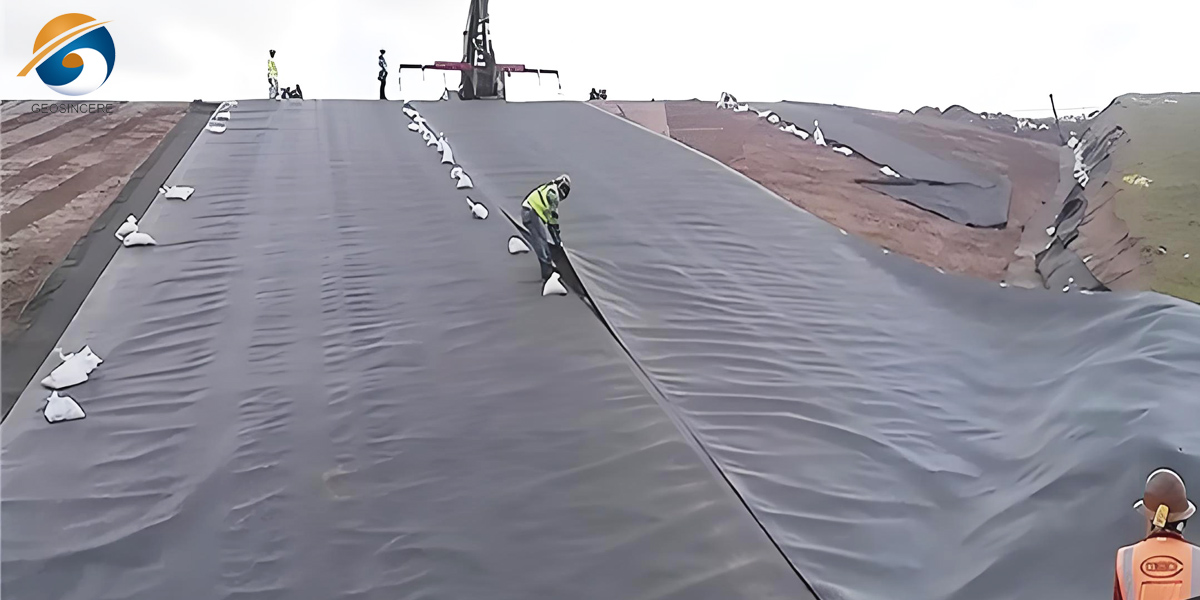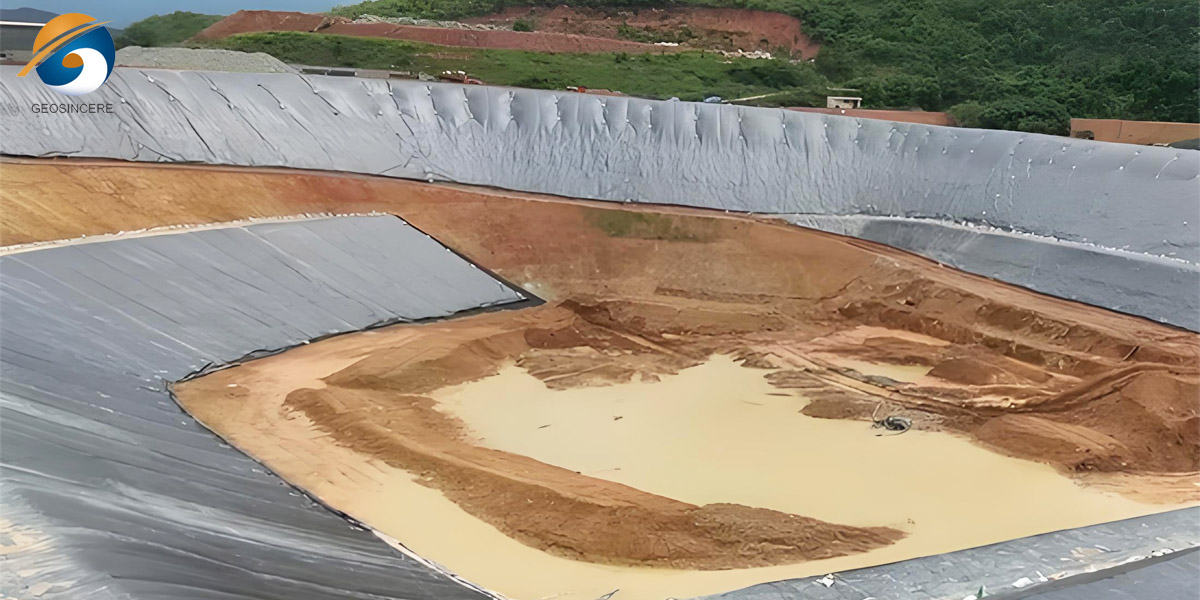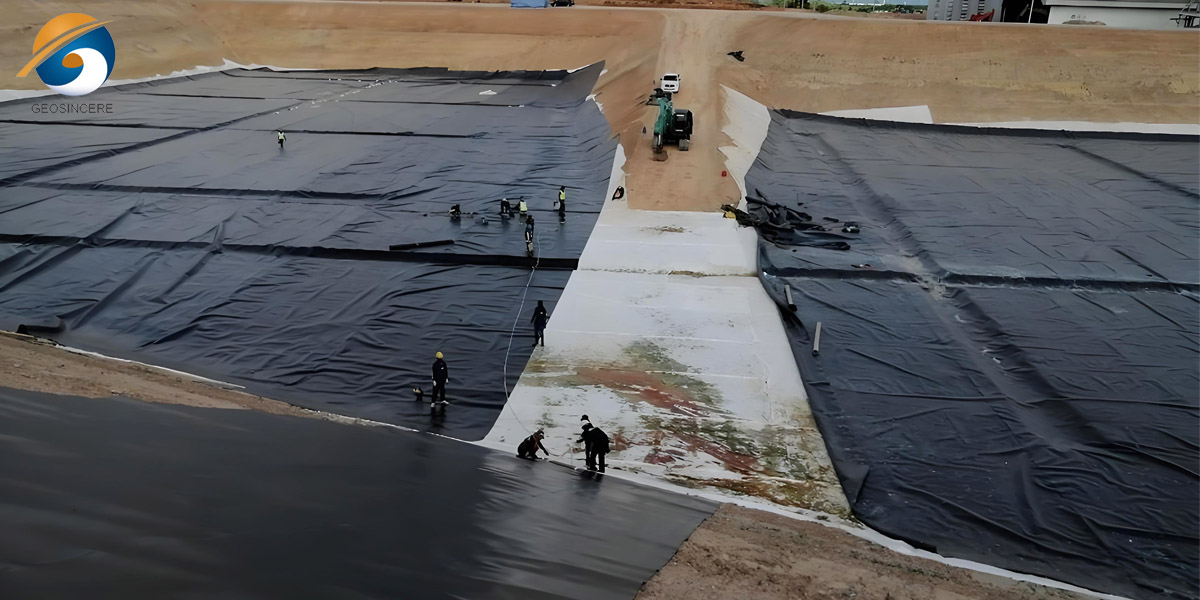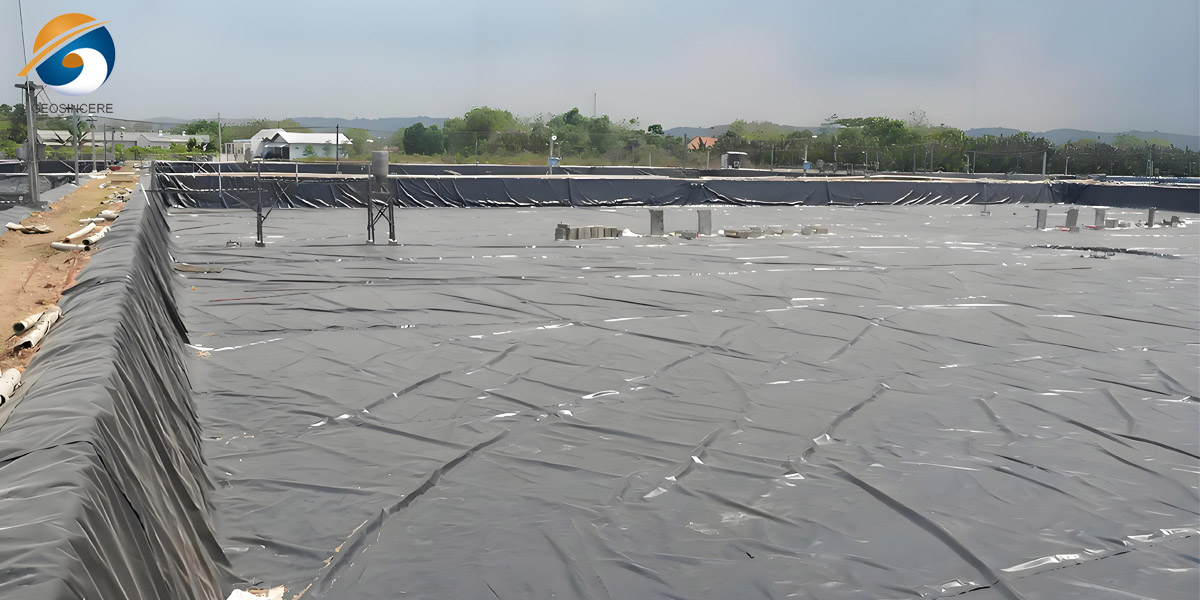How To Choose Geomembrane for Mining Project?
Geomembrane it is now not a famous person material, missing the ruggedness of concrete or the glitz of steel. Yet, it quietly lurks deep inside the foundations of human civilization. Geomembrane, the "master of membranes" in contemporary engineering, makes use of its bendy but resilient nature to construct an impenetrable protection towards the world below our feet. When a challenge encounters a leak, it wields its keeping apart force, casting a shielding spell to dispose of hidden dangers.
In mining operations, environmental safety and security are in no way optional; they are existence and death.If a mine is likened to a giant, then the geomembrane liner is the invisible but vital "protective net" below it—it silently traps air pollution and prevents erosion, but it is regularly overlooked. Choosing the incorrect membrane should imply hefty fines, ecological disasters, or even the closure of a mine.
How do you pick out the most appropriate geomembrane for mining? This is not simply a technical question; it is a choice about accountability and wisdom.
1. What is Geomembrane for Mining ?
Geomembrane is made by way of blow molding polyethylene resin with a sure share of carbon black masterbatch, anti-aging agent, antioxidant, UV absorber, stabilizer, etc. It is a new water-resistant constructing fabric used for anti-seepage and moisture-proofing. High density polyethylene geomembrane is a new kind of anti-seepage and anti-corrosion material, and is broadly used in a variety of tasks with anti-seepage and anti-corrosion requirements.
It makes use of amazing high-density polyethylene virgin resin, the primary aspects of which are 97.5% high-density polyethylene, about 2.5% carbon black, hint quantities of antioxidants and warmness stabilizers, anti-aging materials, and UV absorbers. No different additives, fillers, and expanders are used. It is made via three-layer co-extrusion technology. The resin used is a virgin polyethylene resin particularly designed and formulated for the software of bendy anti-seepage membranes. The effects of professional assessments on the anti-seepage membrane building web page exhibit that the overall performance indications of HDPE anti-seepage membranes have reached or surpassed GRI-GM13.
2. Key Features and Performance of Geomembrane for Mining
2.1 Extremely Low Permeability
This is its most critical characteristic, with an extraordinarily low permeability coefficient (typically much less than 10⁻¹¹ cm/s), efficaciously stopping the penetration of water, steam, and chemicals.
2.2 Chemical Corrosion Resistance
Resistant to a range of acids, alkalis, salts, and natural solvents, it is appropriate for use in a range of complicated environments, such as landfills and sewage cure tanks.
2.3 Excellent Mechanical Properties
High tensile strength, tear resistance, and puncture resistance permit it to face up to positive building forces and basis deformation at some point of use.
2.4 High Durability
UV and anti-aging sellers are introduced throughout production, making sure a lengthy provider lifestyles even in out of doors environments (up to a long time or even centuries).
2.5 Weldability
Using specialised welding equipment, character rolls of geomembrane can be welded collectively into a complete, seamless structure, making sure the integrity of the anti-seepage system.
3. Why do Mines Need Geomembrane for Mining?
3.1 Mines face extremely harsh environmental challenges:
Acidic wastewater corrosion: Strong acids and alkalines seeping from ore can easily dissolve ordinary materials;
Heavy metal penetration: Toxins like lead, arsenic, and mercury can cause permanent ecological damage if they seep into the soil;
Heap leaching site leak prevention: A leak during the heap leaching process results in significant losses of precious metal solutions and contaminates surrounding water sources;
Tailing pond stability: In the face of dam failure risks, an impermeable layer is the last line of defense.
3.2 When selecting geomembrane for tailings treatment, consider the following factors:
- UV resistance
- Environmental stress cracking resistance
- Chemical resistance
- Minimum thickness
- High-temperature resistance range
- Project durability.
When laying HDPE geo membranes in tailings ponds or slag dumps, the seams in the hdpe liner's entire anti-seepage system should be aligned parallel to the maximum toeline, that is, along the slope. When laying geomembrane liner, the minimum number of welds should be minimized, minimizing raw materials while ensuring quality. This also facilitates quality assurance.
Generally, seam lengths should be minimized in corners and deformed areas. Unless otherwise specified, welds should be avoided within 1.5 meters of the top slope or stress concentration areas on slopes greater than 1:6. During hdpe geomembrane installation, artificial wrinkles should be avoided, and the geomembrane should be stretched and laid as flat as possible in low temperatures.
4. Detailed Application Scenarios of Geomembrane for Mining
4.1 Geomembrane for Mining - Environmental Protection Engineering
This is the most widely used and most demanding application for hdpe membrane, primarily used to create barriers to prevent the spread of pollutants.
4.1.1 Landfills
Bottom anti-seepage lining system: This is a classic application of geomembranes. HDPE geomembrane sheet (typically 1.5mm-2.0mm thick) are laid at the bottom and slopes of the landfill, forming a composite lining with materials such as bentonite blanket (GCL) to completely isolate landfill leachate from contaminating the soil and groundwater.
Final cover system: After the landfill is sealed, a hdpe geomembrana cover is also laid on top to prevent rainwater from entering the waste pile and generating new leachate. It also blocks the uncontrolled escape of biogas (such as methane) generated by waste decomposition and allows for its collection and utilization.
4.1.2 Hazardous waste and industrial solid waste disposal sites
These anti-seepage requirements are higher than those of ordinary landfills. Double or even multi-layer lining systems are typically used, utilizing thicker, more chemically stable high density polyethylene geomembrane to prevent the leakage of toxic and hazardous substances.
4.1.3 Sewage Treatment Tanks
Used in regulating tanks, anaerobic tanks, oxidation ponds, sedimentation tanks, evaporation ponds, and other areas for urban domestic or industrial wastewater. Geo membrane sheet prevent sewage seepage, protect the surrounding environment, and reduce water loss.
4.4.4 Contaminated Site Remediation and Isolation
For contaminated industrial sites, soil, or water areas, geomembrana in hdpe can be laid to "cap" or "edge" the site, physically isolating pollutants from the surrounding environment and preventing further spread, thus facilitating subsequent remediation.
4.2 Geomembrane for Mining - Water Conservancy and Hydropower Projects
The anti-seepage properties of hdpe geo membrane is utilized to conserve and conserve water, ensuring the safety of water conservancy facilities.
4.2.1 Reservoirs and Artificial Lakes
Used for anti-seepage in new reservoir basins or for reinforcing older reservoirs. HDPE geomembrane sheet can effectively reduce water seepage losses, particularly in areas with poor geological conditions (such as gravel layers and developed fissures).
4.2.2 Channels and Canals
Laying hdpe geomembrane liner in irrigation channels and water canals can significantly improve water transfer efficiency and reduce seepage losses, which is of great significance in areas with water scarcity.
4.2.3 Dam and Levee
As the core wall or inclined wall of earth-rock dams, it replaces traditional clay core walls, offering faster construction and more reliable anti-seepage effects.
Used for anti-seepage on the water-facing slopes of levees, improving their stability.
4.2.4 Hydropower Stations
HDPE liner sheet Used for anti-seepage in forebays, penstocks, surge tanks, and other areas.
4.3 Geomembrane for Mining - Municipal and Construction Engineering
4.3.1 Roof Gardens/Landscaping
Laying a root-blocking membrane liners (resistant to plant root penetration) above the roof structure provides both waterproofing and prevents plant roots from damaging the building structure.
4.3.2 Landscape Water Bodies
Impermeable geomembrane is used to create water features and prevent seepage in artificial lakes, streams, fountains, and other areas in parks, residential areas, and golf courses.
4.4 Geomembrane for Mining Engineering
4.4.1 Heap Leaching Ponds
In the hydrometallurgical smelting of gold, silver, and copper ores, hdpe impermeable liner is used to construct large heap leaching ponds to contain leachates such as sodium cyanide and prevent leakage of highly toxic solutions.
4.4.2 Tailing Ponds
Similar to landfills, HDPE impermeable geomembrane liner is laid on the dam and bottom of tailings ponds to prevent environmental pollution from tailings wastewater containing heavy metals and other harmful substances. This is a key step in mining environmental remediation.
4.4.3 Evaporation Ponds
In coal mines, chemical plants, and other facilities, hdpe dam liners is used to construct evaporation ponds to collect and concentrate wastewater at high concentrations, allowing it to evaporate naturally. The geomembrane prevents the wastewater from seeping into the ground.
4.5 Geomembrane for Mining - Agriculture and Aquaculture
4.5.1 Aquaculture Ponds
Geomembranes can be laid in shrimp ponds, fish ponds, sea cucumber pen areas, and other areas to maintain water levels and prevent interpenetration between water and underground saline-alkali water. This makes pond cleaning and management easier, reduces disease damage, and increases yields.
4.5.2 Irrigation Reservoirs
Large agricultural irrigation reservoirs and drip irrigation system storage facilities use geomembranes for anti-seepage protection, conserving precious water resources.
4.6 Geomembrane for Mining - Special Applications
4.6.1 Salt Field Crystallization Ponds
During the sea salt drying process, geomembranes are laid in crystallization ponds to prevent brine seepage, improving salt collection efficiency and quality.
4.6.2 Secondary Containment Anti-seepage
Polypropylene geomembrane is laid in underground oil storage tank areas at oil depots and gas stations, or in the ground beneath tank areas at chemical plants, serving as "secondary containment." In the event of a leak in the primary containment, the geomembrane can completely contain the leak, preventing it from entering the environment.
4.6.3 Temporary Emergency Cofferdams
HDPE membrane sheet can be used to quickly construct temporary cofferdams or barriers during flood control or emergency water pollution incidents.
Choose A Reliable Geotextile Supplier To Quote Price for You
GEOSINCERE has been keeping on investing in technological innovation, manufacturing facilities improvement and turnkey engineering abilities. We have invested 10 million dollars into our manufacturing factory which is equipped with state-of-the-art automatic production lines to manufacture high quality HDPE geomembranes and other geosynthetics with optimized processes. Our extensive lines of geosynthetics products are well known for their ensured quality, high performance, excellent durability and best cost effectiveness.
Shandong Geosino New Material Co., Ltd. (GEOSINCERE Geosynthetics) HDPE geomembranes and other geosynthetics products and solutions can meet your requirements by our solid technologies, innovative engineering solutions and excellent customer services. GEOSINCERE always tries our best to solve the most complex civil, mining and environmental challenges with our innovative and high performance geosynthetic products. Quality assurance, factory price and fast delivery time are our competitive advantages.








